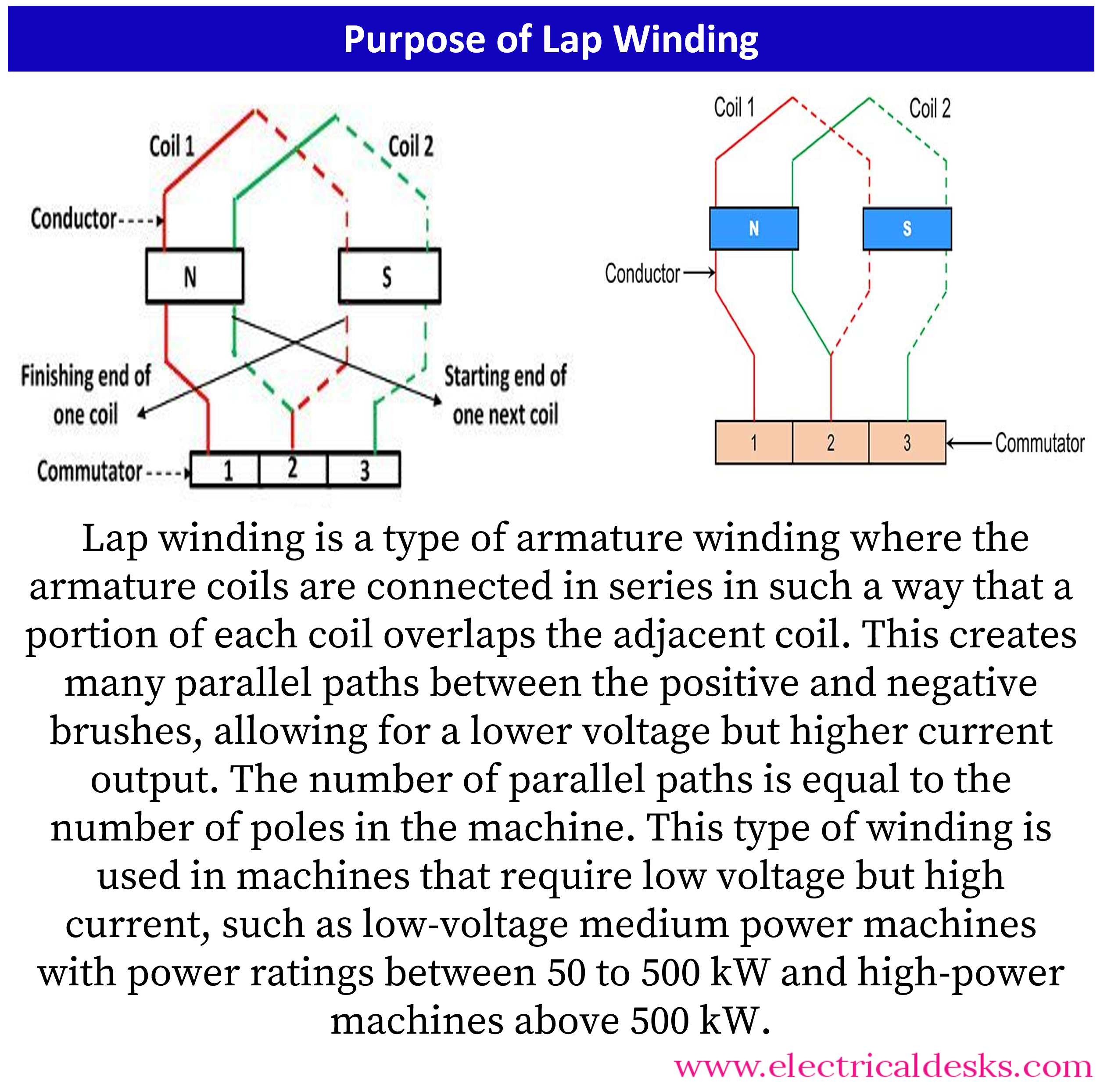The purpose of lap and wave windings is to configure the armature coils in a specific way to achieve the desired voltage and current output in an electric machine.
Lap winding is a type of armature winding where the armature coils are connected in series in such a way that a portion of each coil overlaps the adjacent coil. This creates many parallel paths between the positive and negative brushes, allowing for a lower voltage but higher current output. The number of parallel paths is equal to the number of poles in the machine. This type of winding is used in machines that require low voltage but high current, such as low-voltage medium power machines with power ratings between 50 to 500 kW and high-power machines above 500 kW.
Purpose of Wave Winding:
Wave winding, on the other hand, is a type of armature winding where the armature coils are connected in parallel with only two parallel paths between the positive and negative brushes. This creates a higher voltage but lower current output. The number of brushes is equal to the number of parallel paths. This type of winding is used in machines that require high voltage but low current, such as high-voltage low power machines with power ratings less than 50 kW.
Important points regarding lap and wave winding:
- To achieve maximum emf, the front and back pitches (Yf & Yb) of the lap and wave winding should be made equal to the pole pitch. This is because when the distance between the coil sides of a coil is equal to the distance between the centers of two adjacent poles, the coil sides of a coil lie under opposite poles, which results in maximum emf induced in the coil.
- The front and back pitches must be odd and of the same sign. This is because it allows for the proper alignment of the coils in the armature slots. When the front and back pitches are odd and of the same sign, it allows for the easy formation of the coils in the slots and ensures that they fit properly.
- The number of commutator segments should be equal to the number of coils. This is because the end of each coil is connected to a commutator segment and having the same number of segments as the number of coils will ensure proper distribution of current between the coils.
- The number of commutator segments can also be half the number of conductors. This is because the last and starting end of the two adjacent coils are connected together to one commutator segment. This allows for the proper distribution of current between the coils and ensures smooth and efficient operation of the machine.
- Proper alignment of the coils, commutator segments and pole pitch is crucial for smooth and efficient operation of the machine.
- The number of parallel paths in lap winding is equal to the number of poles, which results in a lower voltage but higher current output.
- The number of parallel paths in wave winding is only two, which results in a higher voltage but lower current output.


